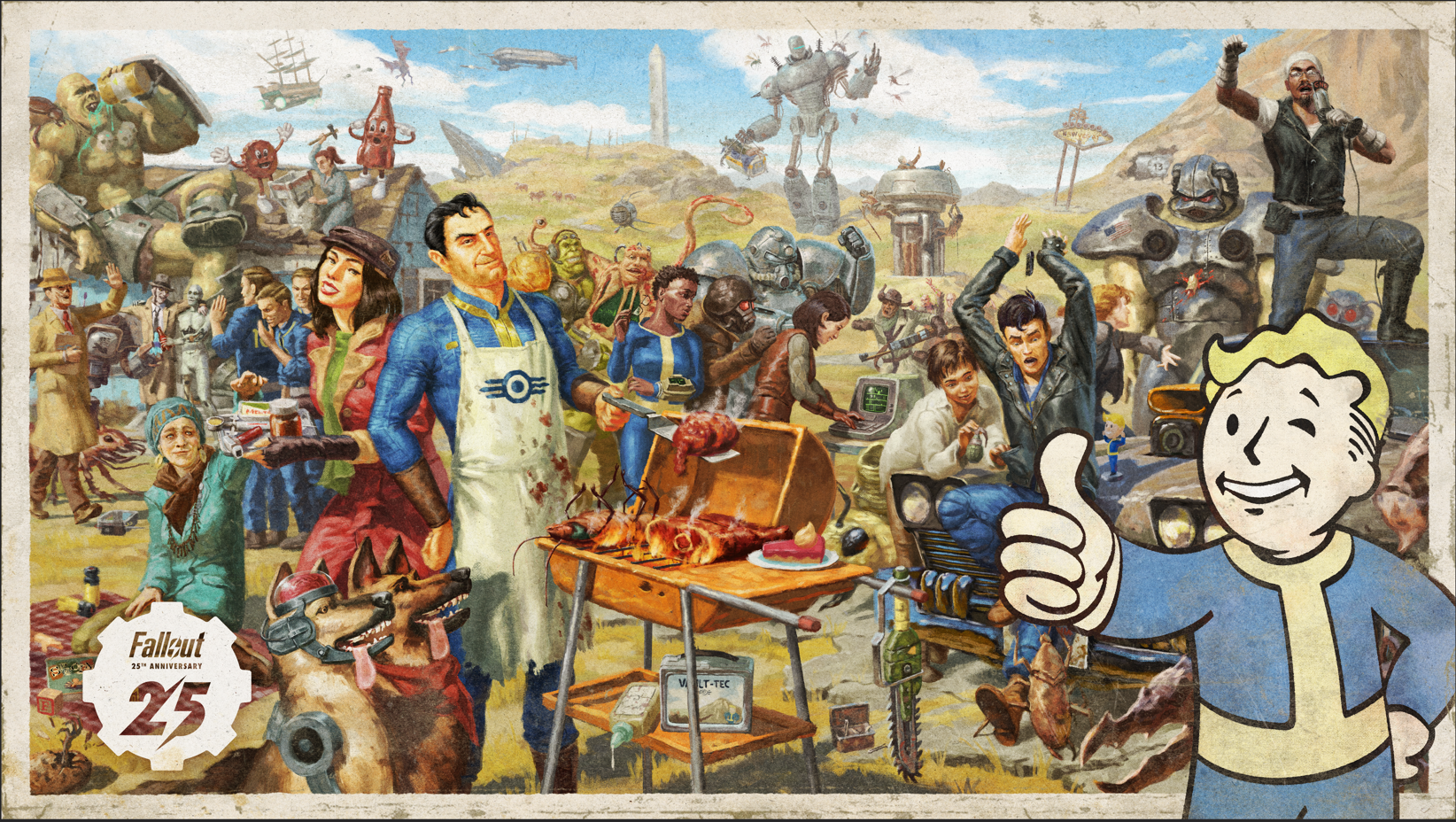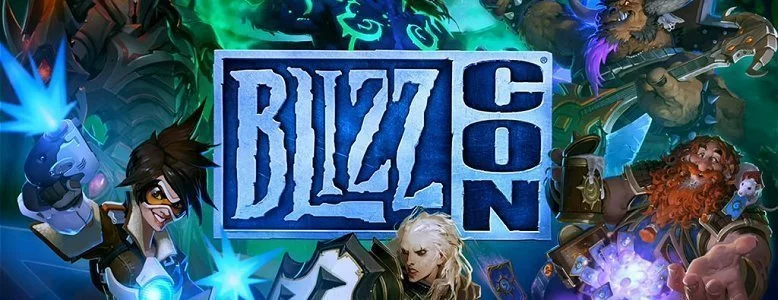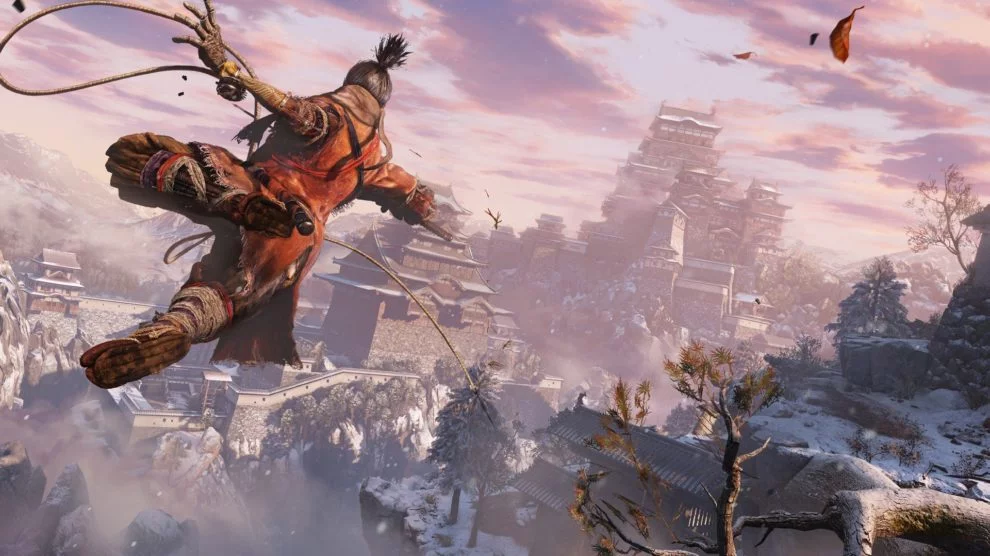Over the past decade, FromSoftware has created some of the most spectacular action games that ultimately have changed the way in which we think about combat and difficulty. We’ve seen many triple-A developers slowly shift away from the combat system seen in the Batman: Arkham series and begin to move towards something closer to what FromSoftware has been perfecting over the last ten years. Demon’s Souls, Bloodborne and the Dark Souls series are punishing games, but they’re punishing because it takes patience and time to learn the mechanics presented to you. If you mistime a block or get greedy and go in for that extra swing with your sword then you’ll probably suffer the consequences. Sekiro: Shadows Die Twice is FromSoftware’s latest title which continues this formula – and if you thought Dark Souls was tough, then Sekiro: Shadows Die Twice is going to make you cry.
Set in a fantastical version of the late 16th century Sengoku, Japan, your character is a shinobi who has been left to die after having had their arm severed trying to protect a young lord. Upon awakening your arm has been replaced with a prosthetic by an elderly Buddhist sculptor, who gives you the name ‘one-armed wolf’ – which translates to Sekiro. From here you set off on a journey to rescue the captured lord and confront your enemy.
While Sekiro: Shadows Die Twice feels like a familiar FromSoftware action game, it plays very different due to the changes that have been made in many of their systems, including their signature combat. Your sword is one of your primary tools, initiating attacks and also used to defend yourself from any advancing enemies. The game wants you to be up close and staying within reach of whoever you’re attacking to try and simulate the art of sword fighting. During a battle both Sekiro and his enemies have a bar that can fill up which is relevant to their posture. Once someone’s posture bar hits the maximum they are then staggered, leaving them open to a deathblow attack which causes a huge amount of damage.
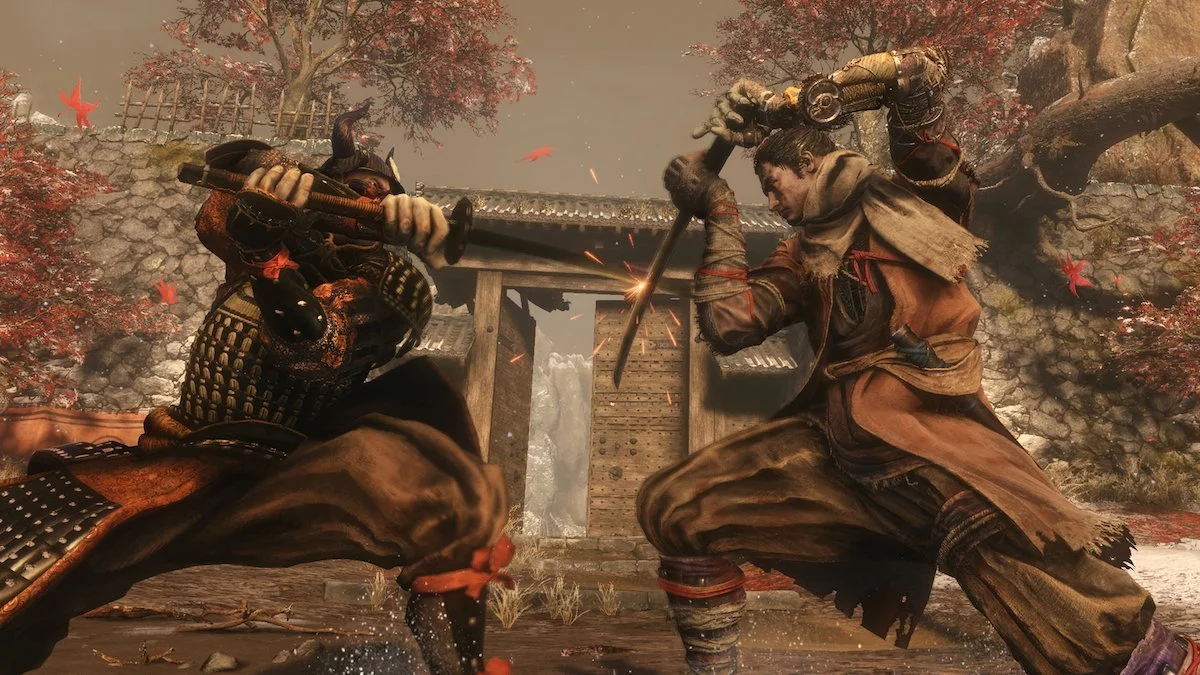
There are a few ways that posture can be affected. One of those is by blocking enemy attacks or landing successful hits; both of these will slowly fill up that gauge. You’ll want to keep the onslaught going though as the metre will slowly decrease if you aren’t engaging. Alternatively, something which will fill that up a little quicker is when you deflect a hit if you time the block correctly or being able to counter a perilous attack with the right skill. Perilous attacks are strong and cause a lot of damage. You’ll be notified on the screen when one of these is coming and you’ll have to quickly decide what to do. As you progress there will be a number of skills which will become familiar to you and allow you to counter these moves – sort of like a rock, paper, scissors mechanic.
The combat ends up being exciting because you’re not left to kiting and back peddling around the environment as in some of FromSoftware’s past games. You want to be in the face of your enemy, and when you start to learn the attack patterns it’s brilliant watching this swordplay unfold as you clash blades.
One other major difference with Sekiro: Shadows Die Twice is that it is a single-player game that’s ditched a lot of the RPG elements implemented in previous FromSoftware titles. You’re no longer putting points into stat categories like Strength and Stamina or running around accumulating different pieces of gear to increase your armour resistance. Instead, you’ll acquire experience by defeating enemies; each time you fill the experience bar you’ll gain a skill point. These points are used in a skill tree that unlocks extra move sets, and also improves your existing items and skills to help you survive longer.
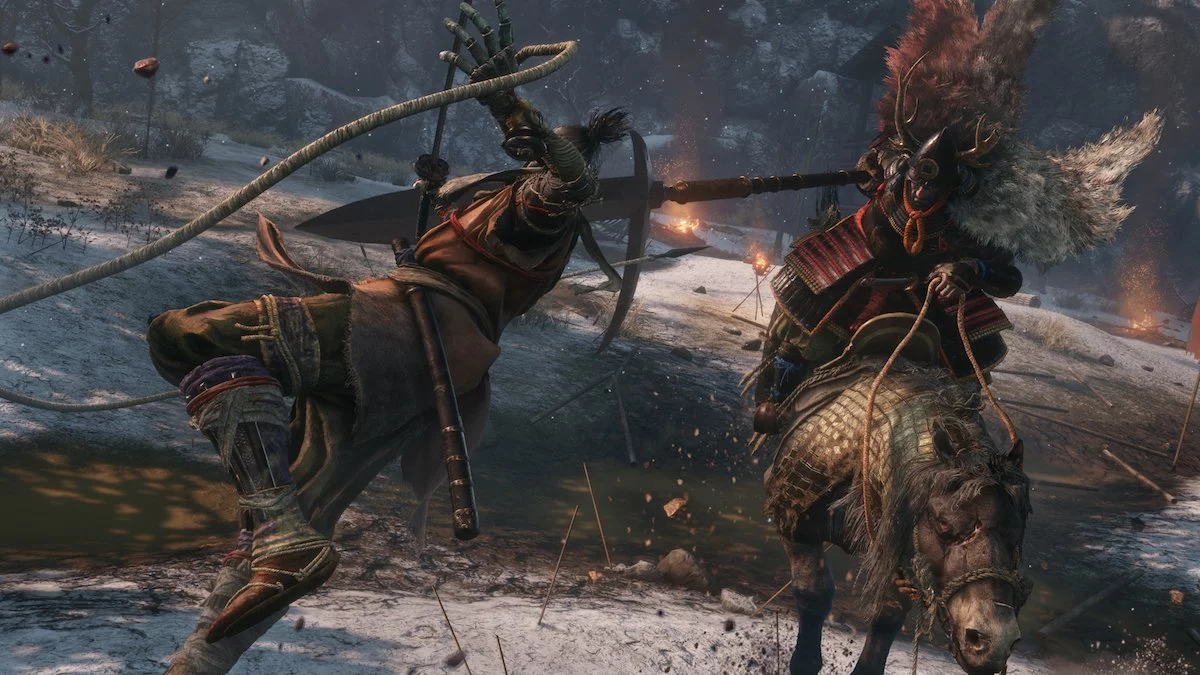
This brings us to death. You’re very fragile in Sekiro: Shadows Die Twice — as its name suggests, when die you’ll be given another chance. You’ll be prompted for the opportunity to resurrect which will get you back up on your feet to begin fighting again. If you can successfully kill a number of enemies you’ll be able to build that charge back up again and continue using it at a later stage. If you die and are not able to resurrect, you’ll find yourself at the last checkpoint — known as Sculptor Idol’s – losing half of your experience gained in that skill level as well as half of the current gold that you have in your pocket. It’s a slightly different take on the souls formula that we’ve seen in the past, where you’ll drop the souls you’ve collected on death and have to recover them. The only way to secure experience is by reaching that next skill point buffer. By doing this is, FromSoftware replicates that feeling of risk vs reward. You have to learn when it’s the right time to disengage from a losing battle, or having to face a big step backwards in your skill progression.
The level design in FromSoftware’s recent games has been outstanding. The studio has done this fantastic job of building up all this tension until you found a shortcut which gave you a quick route back to the last bonfire or lantern. Sekiro: Shadows Die Twice adds a lot of verticality to the environment, so you end up seeing a little bit less of these shortcuts. Instead, Sculptor Idols seem more linear in their progression. To help with the verticality, Sekrio is able to grapple onto anchor points throughout the world and leverage himself up to these locations. From these points you can get a better overview of the area, and they can also come in handy when trying to initiate a fight or to disengage when you are overwhelmed. As you progress through the game it does open up and branch off into different areas that you can explore. This might be the only negative criticism that i have with it so far, is that I’ve felt a little overwhelmed in terms of doubting myself if I’m moving forward in the right order of progression of the areas.
A big aspect of the game relies on you to use Stealth as a weapon — you are a ninja after all. You can grapple yourself to high locations and pounce on unsuspecting enemies, or sneak up behind someone out of the tall grass and hit them with a devastating backstab. If an opponent hasn’t noticed you then you’ll be able to take care of them in one quick execution. For the most part this works on just about everyone, except that the world is populated with what is basically a boss fight around every corner, unlike in Dark Souls or Bloodborne, in which the areas crescendo to spectacular boss fights that have different phases and attack patterns as you continue to beat them down. With Sekiro: Shadows Die Twice these mini bosses that you come across also have multiple phases that you’ll need to work through before you can kill them for good.
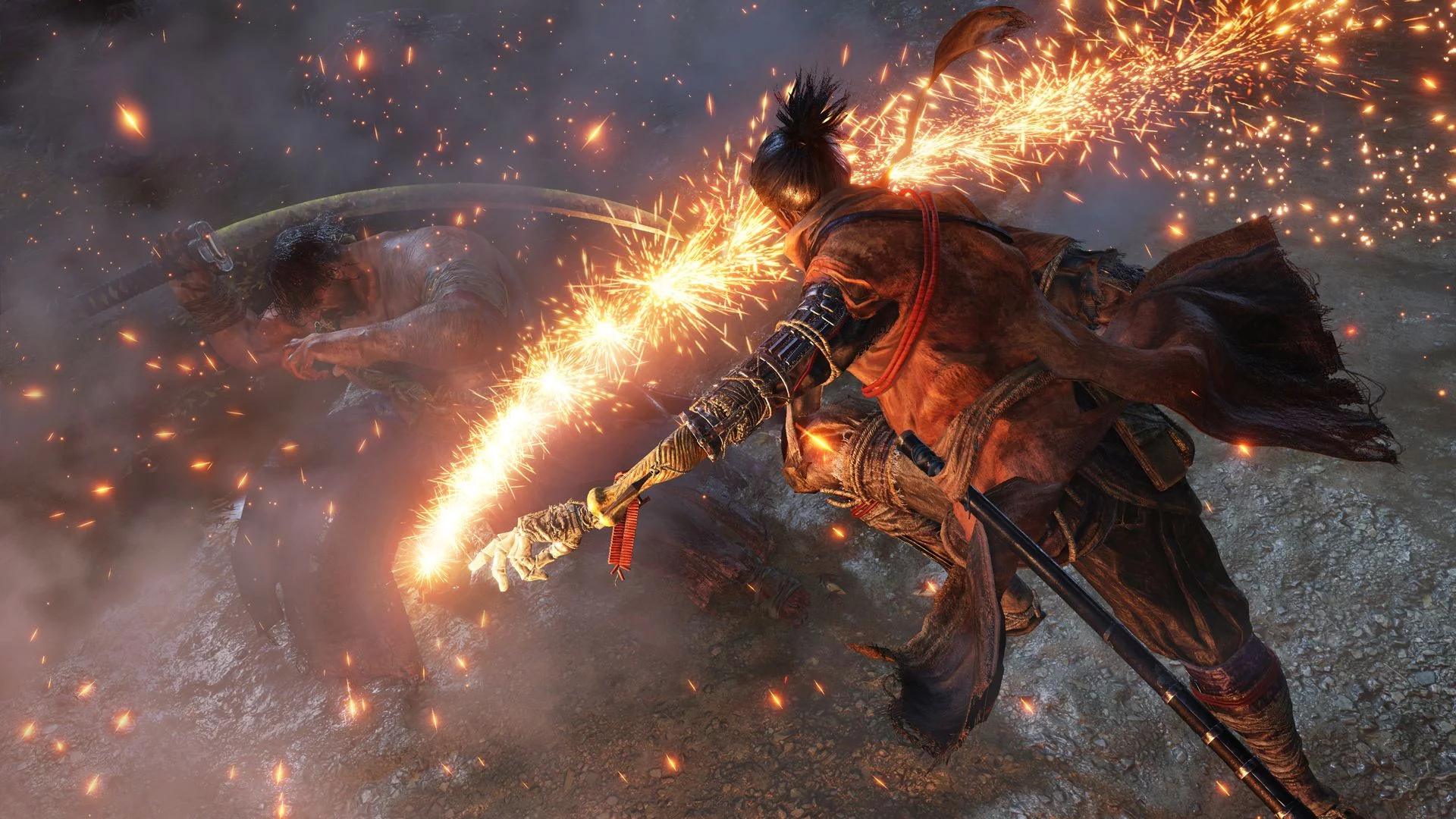
In order to help you deal with these enemies, Sekiro’s prosthetic arm can be upgraded with a number of different skills that can be interchanged in the midst of battle. You’ll have to learn what works on some enemies, and what is considered a weakness to them, in order to find the best loadout combination. They can be challenging fights but you’ll gain resources on finishing them that will help you level your character to make him a little bit stronger. There are also larger scaled boss battles, but these are less prevalent than what we’ve seen in other FromSoftware games.
Because Sekiro: Shadows Die Twice is entirely a single-player game, there’s no online component to be found. You can’t call in other players to help you fight and there aren’t messages left on the ground to give you any hints about what might be ahead. FromSoftware has incorporated an eavesdropping system that allows you to listen into conversations that might be happening around the environment. These give added detail to the story and world which Sekrio: Shadows Die Twice is situated in, as well as giving the player advice and guiding them on how to complete certain objectives. You might overhear a discussion that provides you insight into a weakness for battle you’ve been trying to win. It’s a nice way of adding in something that helps player and rewards them for exploring parts of the world.
Sekiro: Shadows Die Twice continues FromSoftware’s dominance, showcasing that it’s on another level when it comes creating action games in fantastical worlds. You’re going to die, and you’re go die a lot. But these brilliant gameplay systems that come together to form experiences that we don’t see in other triple-A games is why people get excited for what Hidetaka Miyazaki is doing at FromSoftware. Between Bloodborne, Demon’s Souls, the three Dark Souls games and now with Sekiro: Shadows Die Twice, Miyazkai has all but solidified himself as one of the greatest game directors of this decade.

|
|
The good
|
The bad
|
Sekiro: Shadows Die Twice is being reviewed using promotional code on Windows PC and Xbox One, as provided by the publisher. Click here to learn more about Stevivor’s scoring scale.
This article may contain affiliate links, meaning we could earn a small commission if you click-through and make a purchase. Stevivor is an independent outlet and our journalism is in no way influenced by any advertiser or commercial initiative.


